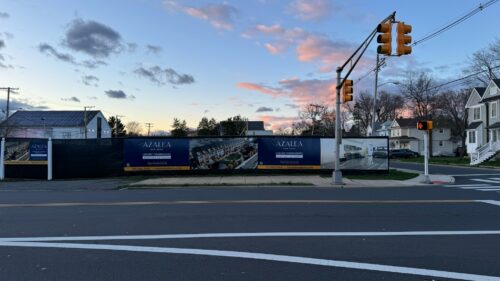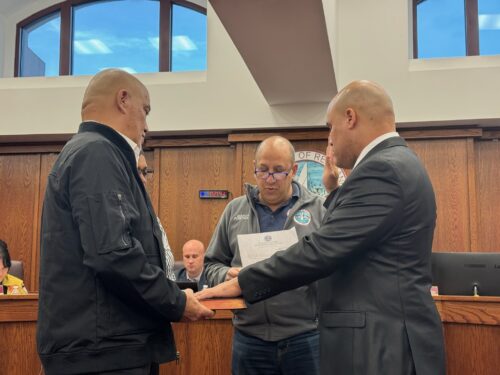
By DUSTIN RACIOPPI
Red Bank’s litigation with the Community YMCA is near an end, but Mayor Pasquale thinks borough officials may not be finished making trips to Superior Court in Freehold.
After a three-hour meeting that included nearly two hours of grilling by local watchdogs, the council passed a resolution approving a settlement that allows the nonprofit to sell the former borough police state at 51 Monmouth Street to its neighbor, St. James RC Church/Red Bank Catholic High School. The settlement puts to rest the second of two suits that had pitted the Y against the borough.
But comments from the public suggest Red Bank may be in for more legal work.
“I think there’s going to be a challenge to our action,” Menna told redbankgreen afterward.
Gadflies Bill Meyer, a Monmouth Street lawyer who has sued or been involved in litigation against the borough in the past, and Steve Fitzpatrick dominated the council meeting for nearly two hours, “cross-examining” special borough attorney John Bonello, as Bonello put, and the council, referencing numerous statutes and ordinances touched on by the lawsuit.
Under the terms of the settlement, the borough would pay $125,000 over the next five years to the Y for renovations made to a building annex that is home to the Relief Engine Company firehouse, but would hold a lease on the house and war memorial for 99 years “a deal,” borough Administrator Stanley Sickels said.
But Meyer and Fitzpatrick argue that the 2000 sale of the old borough hall and police headquarters to the non-profit Kidsbridge, which was later absorbed by the YMCA, was “appalling” and contrary to state statute from the start. They also said former mayor Ed McKenna had a conflict of interest in the sale, as he was a principal in the non-profit at the time of the sale, although McKenna later said he had recused himself from any discussions involving the transaction. The council backed that up on Monday night.
After reading from a tome of legal documents, Fitzpatrick signaled that the borough’s settlement could face future challenges. He argued that the sale to RBC, as a religious institution, could be in violation of state statute.
“Are we entering an area that maybe we should be careful about? Are we co-habitating both a public use and a religious use on the same piece of property, and would that withstand any legal challenges under both the state and federal constitution?” Fitzpatrick said. “If a third party brought an action here stating that what you’re about to do would be permissible, would be allowed, would the borough be able to survive a lawsuit?”
Considering that the settlement was reviewed and approved by Superior Court Judge Thomas Cavanagh, Bonello said the borough dotted all its i’s and crossed all its t’s in the case, although he admitted that including a reverter clause in the initial sale of the property could have saved the borough the headache of the present lawsuit.
Bonello said the reverter clause was assumed in the deal, being it was part of state statute, but “it would have been prudent to put that in there.”
At the time of the sale to Kidsbridge, Red Bank didn’t have the money or want to rehabilitate the dilapidated building, so in an effort to retain its historic status and nature, sold it to the non-profit for a dollar, Sickels said. The Y later absorbed Kidsbridge and made significant renovations to the building, but then made a move to sell in 2008, which triggered the legal flurry that culminated Monday night.
Sickels said the settlement that was approved Monday was the best option for the borough considering the Y had saddled Red Bank with more than $600,000 in agreed-upon renovations to the firehouse. The borough fought the cost of the renovations, and Cavanagh declared that the $125,000 payout to the Y was a fair amount.
The borough comes out on top, Sickels said.
“It was all done before the supervision of the court,” he said. “So what the council did was approving what has already been reviewed and approved by a Superior Court judge.”





















